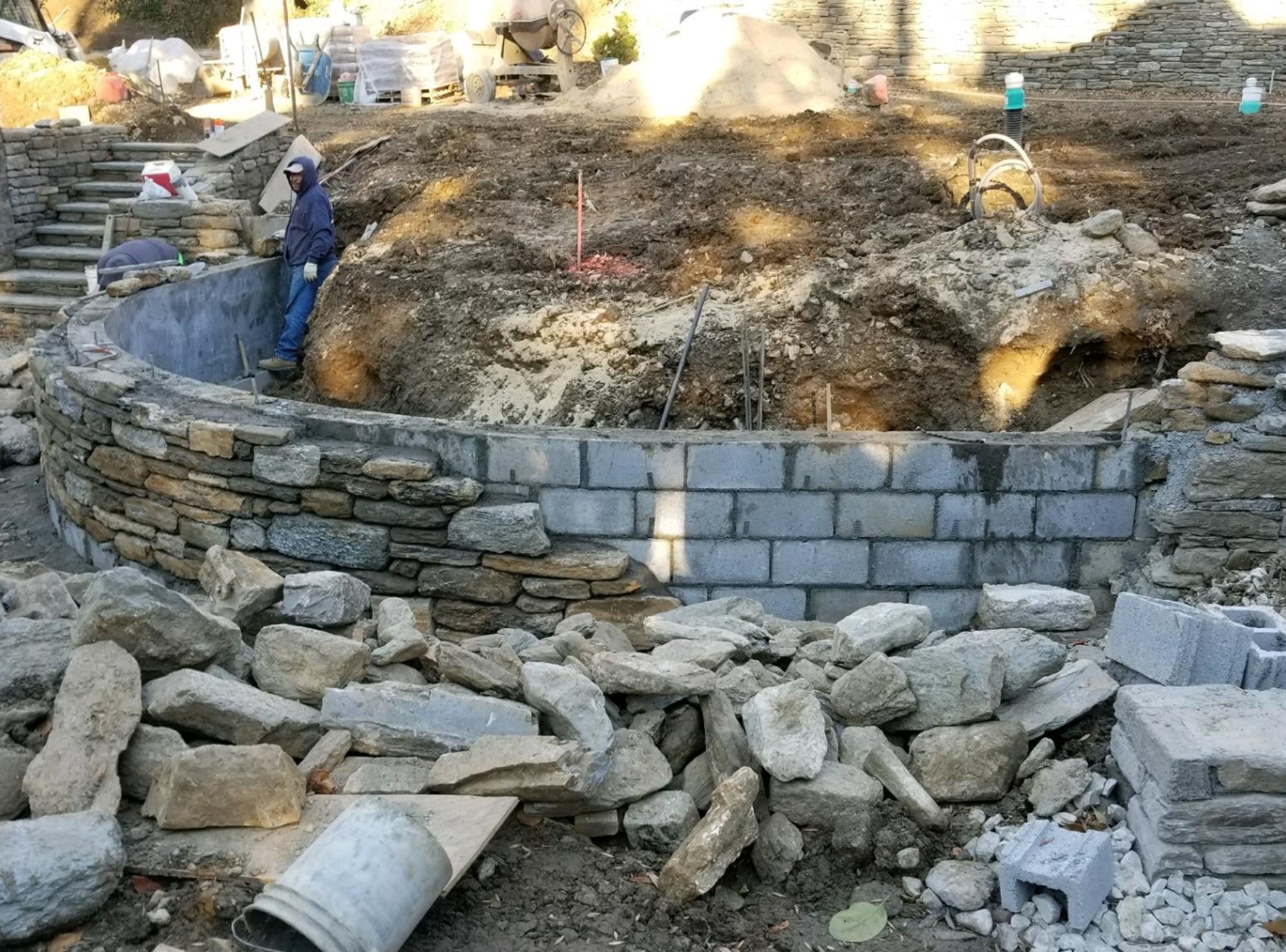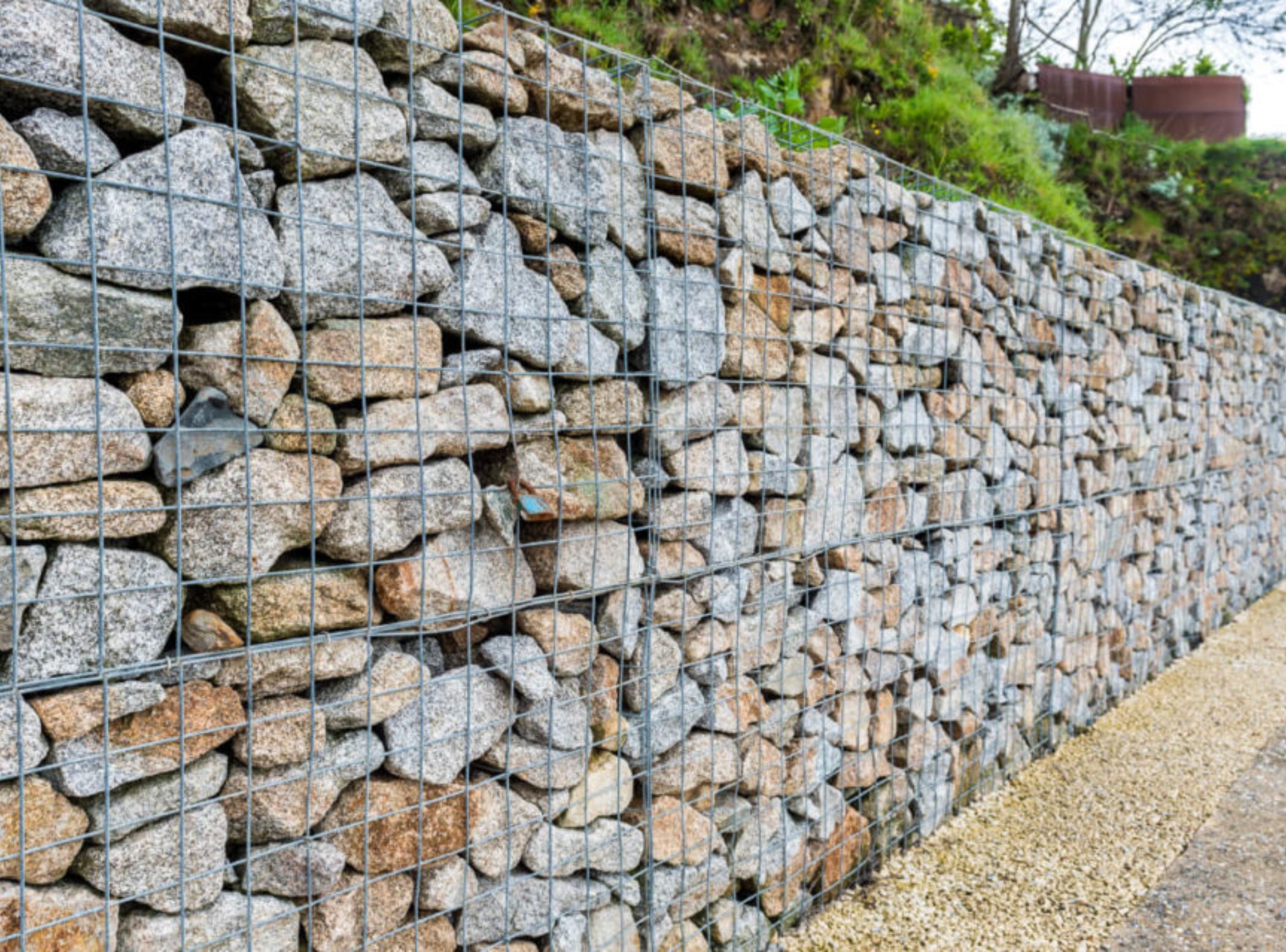Retaining Walls
Retaining Walls are a common and vital component of many Civil Engineering and Site Design projects,. Generally speaking, retaining walls are designed to hold back soil or other materials, but they can be used in a variety of ways and for various purposes, some of which are described below.
- If you would like to level off an area of your sloped property for recreational purposes, one or more retaining walls may be constructed to contain the soils to allow the grade in that area to be safely raised and leveled for your use and enjoyment.
- Similarly, if you have existing slopes that are causing soil erosion and unsafe conditions, retaining walls would allow you to level off one or more areas of the property, resulting in tiered, level, or only slightly sloping areas, and eliminating unwanted, unsightly, and potentially hazardous steep slope areas.
- Maybe you are improving a section of your property with, for example, a new driveway or swimming pool, and there is not enough space around the improvement to allow for the construction of gentle slopes to integrate the proposed improvement with the surrounding terrain. Retaining walls may be constructed to allow for the abrupt change in elevation that may be needed, while also providing the necessary structural support to ensure that your new improvement is structurally sound for the long haul.
- Retaining walls may also be used in landscaping, to create tiered planting beds or to enhance the aesthetics of your landscaping and your property.
Types of Retaining Walls
Segmental Retaining Wall
Segmental Retaining Walls consist of modular interlocking blocks that are constructed vertically or battered (on an angle). They are often designed as gravity retaining walls, which rely on their own weight to counteract the forces imposed by the soils they are retaining. Alternatively, these walls may be constructed as reinforced soil retaining walls, which include layers of geosynthetic material that are connected to the blocks of the wall and extended into the soil behind the wall to strengthen the soil and provide additional lateral stability to the retaining wall. For cases in which taller walls are required, a tiered retaining wall system may be designed. Segmental retaining wall blocks and materials are produced by companies such as Allan Block, EP Henry, Versa-Lok, and Unilock.

Cantilever Retaining Wall
Cantilever Retaining Walls have stems that are constructed of reinforced concrete or reinforced concrete masonry units (CMU) with a reinforced concrete foundation. A stone or brick veneer or other façade may be installed over the concrete or CMU to fit the aesthetic needs of your project or property.

Gabion Basket Retaining Wall
Gabion Basket Retaining Walls utilize wire baskets filled with gabion rocks to create walls that will retain soils and other materials, while also allowing water to drain through the wall. Due to their permeable nature, landscaping and planting beds are often integrated with tiered gabion basket retaining walls. Gabion retaining walls also are designed as gravity retaining walls, relying on their own weight to provide the necessary structural and lateral support.

Anchored Retaining Walls
Anchored Retaining Walls are often constructed in areas where there is limited space or high loads. They are generally typical retaining walls such as cantilever or gravity walls - though oftentimes thinner - that utilize anchoring cables or rods to provide additional support and stability. The anchoring rods or cables are driven sideways, at a downward slope, into the soil behind the retaining wall, and embedded into rock. Helical anchors also are commonly used in anchored retaining walls.

Boulder Retaining Walls
Retaining walls that do not exceed 4 feet in height also can be constructed using boulders. They function as a gravity retaining wall, and you can be constructed using boulders that you may already have on your property.

Further Information and "Example" Plans Developed by Alta can be Viewed on the Following Pages:
CONTACT US. today to discuss the different types of retaining walls and what might work for your project.
